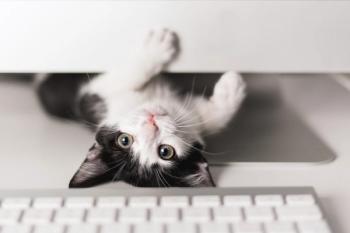
Gender wage gaps widen
Even though the veterinary industry is now heavily female-dominated, there is still a [wage] gap.
NATIONAL REPORT — At face value, the figures are alarming.
Male and female veterinarians are separated by a 6 percent starting-salary difference at the beginning of their veterinary careers. But that distance grows with time, eventually leading to a 30 percent, or $36,600, average annual salary gap.
Table 1: Salaries of veterinarians in private practice, 2005
The reality might be different than what the numbers depict, argues Kerry Richard, former employment and labor attorney with Tobin, O'Connor, Ewing & Richard in Washington. The numbers potentially are flawed because they don't accurately reflect the state of the genders in the field: Men have higher levels of experience and practice ownership than women, who, in mass, are newer to the industry, Richard contends.
But even when numbers were adjusted to reflect Richard's suggested clarifications, previous American Veterinary Medical Association studies show wage gaps still exist, says marketing director Jim Flanigan, referring to the AVMA-Pfizer Business Practices Study, released in January 2005.
DVM Newsmagazine surveys also have documented this disparity.
Salary levels are outlined in the 2007 AVMA Report on Veterinary Compensation. Compiled from the 2006 AVMA Biennial Economic Survey of Veterinarians, numbers show female DVMs earn less in every reported field of veterinary medicine.
Table 2: Salaries of veterinarians in public or corporate employment, 2005
Legally, employers are held to the standard of equal pay for equal work, says Desmond McIlwain, labor and employment-law attorney with Tobin, O'Connor, Ewing & Richard. Courts and the Equal Employment Opportunity Commission (EEOC) look at education, training, physical and mental capabilities needed, job responsibility and authority, decision-making power and work conditions, among other areas, when deciding if jobs are equal. Almost every state also has its own laws regarding equal pay. Some are more stringent than federal requirements, McIlwain says.
Inside industry wages
Male veterinarians in private practice, on average, earned almost $42,000 more per year than their female counterparts across all seven private-practice categories in the study, including large-animal exclusive, large-animal predominant, mixed-animal, small-animal predominant, small-animal exclusive, equine and other. The greatest gender disparity — $77,345, or 49 percent — exists in equine practice, while only 28 percent separates large-animal predominant male and female practitioners.
Specialists report a 43 percent difference between the annual salaries of male and female board-certified, small-animal practitioners.
Wage gaps continues beyond private practice, where annual inequities are less among veterinarians in public or corporate sectors, but a 27 percent average pay gap still exists between the genders, the report says.
Although less than a $10,000 disparity exists between the genders employed by federal-government entities, veterinarians in academia report greater wage discrepancies.
According to the study, university-affiliated male veterinarians earn an average $42,730 more annually than their female colleagues. That inequity is exacerbated by data showing women log, on average, nearly four more hours per week than their male counterparts but still earn roughly 40 percent less.
Information shortfalls?
The report does not specify the ages of the male and female employees, which could have an impact on overall wages in an industry where women are considered "latecomers," Richard says.
"Even though the veterinary industry is now heavily female-dominated, there is still a [wage] gap. Part of this has to do with the fact that the men in the industry tend to be older, more experienced and are more likely to be owners than women at this time. Another factor is that many of the women graduates in the past 10 years have chosen to work as relief workers or as part-time or independent contractors," she says.
"These positions tend to slow women down as they climb the corporate ladder, though they also provide a better lifestyle."
The report validates Richard's contention that financial inequality has a catch: Female private practitioners typically work fewer hours. Male private-practice owners across all types of veterinary medicine average 53.7 work hours weekly, while women log 47.8 hours.
This translates to an annual difference of 306 hours, the equivalent of two-and-one-half 40-hour workweeks.
By comparison, associates' timecards show women working 47.5 hours a week while their male counterparts remain clocked in nearly four hours longer.
And when working less, DVMs are also more likely to bring in less business.
"It can be really misleading to look at a person's salary and say they are making less money if you know nothing about the formula of how their salary is based and the hours they are working. A very large amount of salaries are based on a percentage of productivity," says Christopher Allen, DVM, JD, and president of Associates in Veterinary Law P.C., Chenango Bridge, N.Y.
"If you choose to have a family and your spouse also is working, you tend to cut back in the office. This may provide a legitimate reason to pay women less, unless they in fact do as much as the men," Richard says.
Family issues were not addressed specifically in AVMA's most recent study; however, the 2005 AVMA-Pfizer study did evaluate reasons for gaps — including Richard's suggestions and others, such as the age of a practice and use of successful business strategies — and came to this conclusion:
"Women in veterinary medicine earn less than their male counterparts. Even when individuals who worked full time and had similar levels of experience were compared, the differences were dramatic," stated the executive summary of the findings.
"It is not just statistical reporting errors or differences in the population," Flanigan says.
Widespread inequity
Veterinary medicine is by no means alone in the trend, Richard says. "I see the same thing in most of the professions — lawyers, accountants, dentists, etc."
An American Dental Association survey shows male dentists who graduated from 1995 through 2004 earn on average 24 percent, or $42,700, more per year than their female counterparts.
A recent Association of American University Women (AAUW) Educational Foundation study — "Behind the Pay Gap"— further analyzes gender wage gaps and shows male college graduates out-earn their female counterparts in all professional areas analyzed but one.
"College-educated women have achieved positions of leadership in every field of endeavor, including making remarkable gains in traditionally male fields, such as medicine, business and law. Yet women's earnings continue to lag behind those of their male peers in nearly every occupation and at every education level," says Barbara O'Connor, AAUW Educational Foundation president.
"The pay gap between female and male college graduates cannot be fully accounted for by factors known to affect wages, such as experience, including work hours, training, education and personal characteristics. These unexplained gaps are evidence of discrimination, which remains a serious problem for women in the workforce," the study contends.
The report takes the stance that women's choices across all industries are fraught with inequities. Societal views on motherhood and fatherhood are drastically different. Mothers are expected to make career and personal sacrifices for family, and even women without children may be passed over for professional opportunities because they are viewed as "potential or future mothers," says the study. Meanwhile, fatherhood "appears to engender a wage premium. Men appear to spend more time at the office after becoming a father," the report states.
But whether or not the problem is improving or worsening remains unknown. Although it appears women have made great strides in many fields, the salary inequities have actually gotten larger, according to the AAUW study, which reported a 62 percent wage gap between men and women in 1979, compared to an 81 percent difference in 2005.
"What can be done about the gender pay problem? To begin with, it must be publicly recognized as a problem. Too often, both women and men dismiss the pay gap as simply a matter of different choices, but even women who make the same occupational choices that men make will not typically end up with the same earnings," says the study.
Growing issue?
Despite the AAUW findings, wage gaps are shrinking — but slowly — in veterinary medicine as women gain momentum in the profession. AVMA data show women veterinarians in private and public positions closed the roughly 30 percent wage gap by about 3 percent from 1999 to 2005, Flanigan says.
"Although disparities in compensation still exist, they are more often the result of a woman's choice not to be 'career-focused' than the result of gender stereotypes. Veterinary medicine is probably unique among professions in that most veterinary practices — even those that might prefer men — are hard-pressed not to hire, promote and build their practices with women these days. Simply put, women are the profession currently," she says.
Although litigation against employers for gender discrimination through wages remains rare — mainly because the cost of litigation often outweighs the potential amount of recovery, Allen says — suspected discrimination should be pointed out immediately.
If a lawsuit is successful, parties can be reimbursed for any money lost, including back pay for wages and benefits. Compensatory and punitive damages hinge on the nature of the violation, and there is a cap based on the size of the employer's company under federal discrimination laws. The most common range — for companies between one and 100 employees — makes them vulnerable to facing damages from $50,000 to $300,000, McIlwain says.
Meanwhile, strides toward equality in veterinary medicine continue to be made, even if they aren't followed nationwide across all professions, McIlwain contends.
"I think the problem is beginning to resolve itself. The supply of veterinarians has shifted so dramatically to the female that it is significantly skewed in that direction," Allen says of his New York-area region. "If you want to hire a veterinarian, you are in a position where the demand exceeds the supply, and therefore that tends to balance out compensation.
McIlwain agrees the wage environment is improving. "As more and more women are rising up the ranks through the work force, it is becoming less and less prevalent."
Newsletter
From exam room tips to practice management insights, get trusted veterinary news delivered straight to your inbox—subscribe to dvm360.






